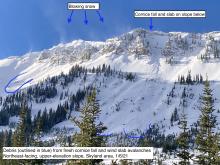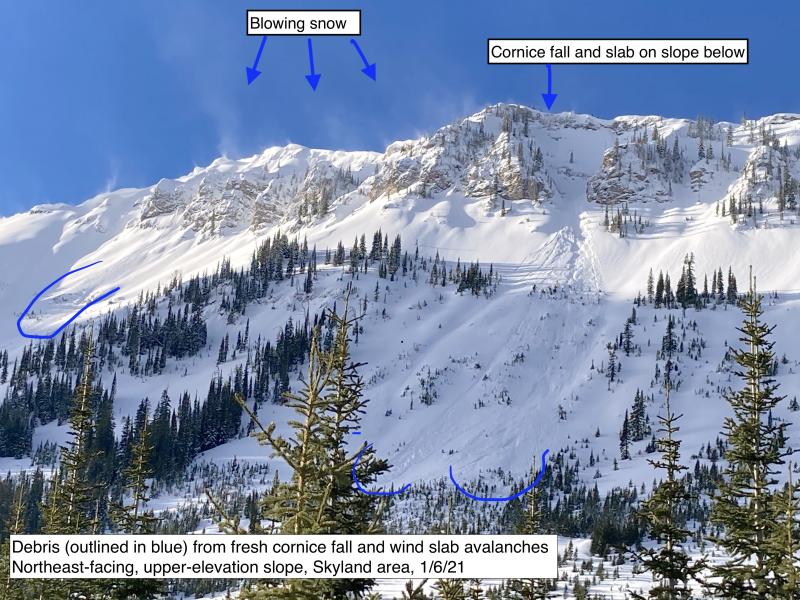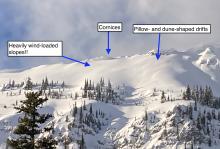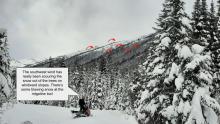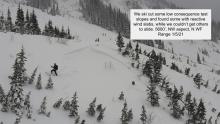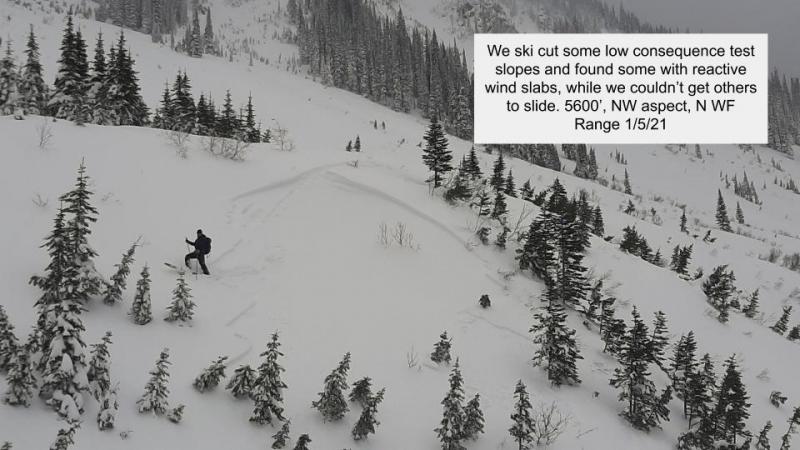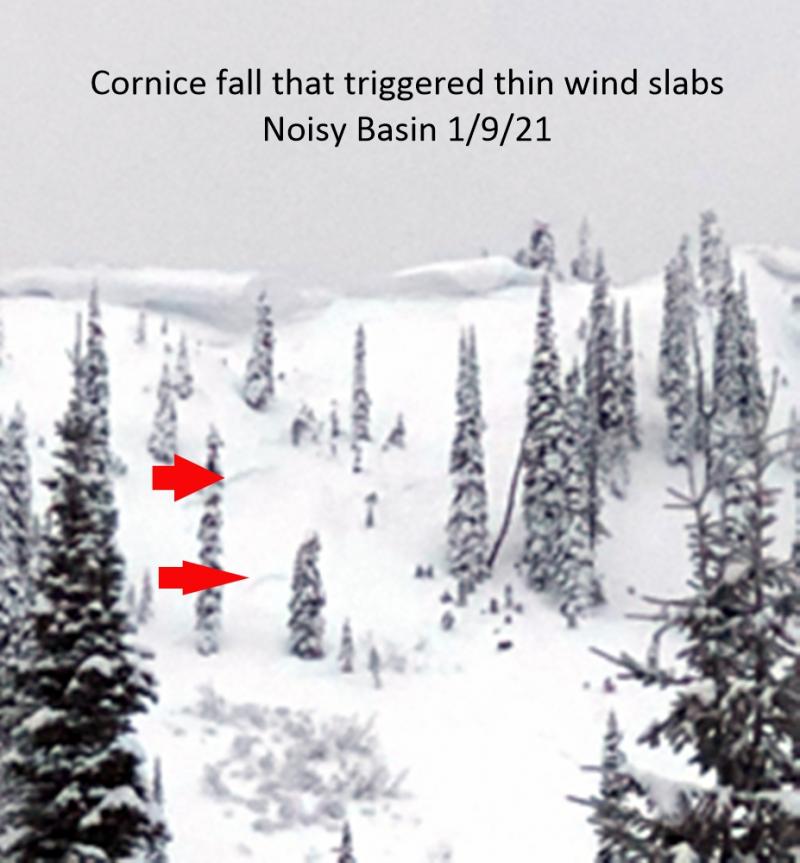| Thursday | Thursday Night | Friday | |
|---|---|---|---|
| Cloud Cover: | Mostly Cloudy | Mostly Cloudy | Mostly Cloudy |
| Temperatures: | 21 to 28 deg. F. | 14 to 17 deg. F. | 19 to 24 deg. F. |
| Wind Direction: | West | Northeast | Southeast |
| Wind Speed: | 6 | 11 | 10 |
| Snowfall: | 0" in. | 0" in. | 0" in. |
| Snow Line: | 2000' | 1500' | 1000' |
Whitefish Range
Flathead Range and Glacier National Park
How to read the forecast
Dangerous avalanche conditions have developed in leeward terrain near and above treeline. Stiff wind slabs have not bonded well to crusts and persistent weak layers. They will be reactive on steep slopes below ridges and in crossloaded gullies. Bigger terrain means you can trigger bigger avalanches. Be conservative and avoid slopes where stiff snow cracks or collapses. Feel for thicker slabs hiding under softer new snow.

3. Considerable
?
Above 6500 ft.
2. Moderate
?
5000-6500 ft.
1. Low
?
3500-5000 ft.
- 1. Low
- 2. Moderate
- 3. Considerable
- 4. High
- 5. Extreme
-
Type ?
-
Aspect/Elevation ?
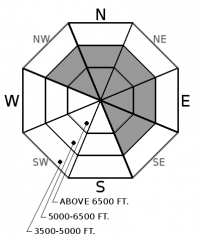
-
Likelihood ?CertainVery LikelyLikelyPossible
 Unlikely
Unlikely -
Size ?HistoricVery LargeLargeSmall

Stiff wind slabs have bonded poorly to underlying crusts and weak layers. They will be larger above treeline in the northern Whitefish Range and in the alpine of the Flathead Range and Glacier Park. You can trigger large slabs that break in surprising ways if you don’t dial back your terrain choices today. These slabs may be harder to spot under softer new snow. Treat steep, leeward terrain with caution. Watch and feel for shooting cracks and collapses in thick, drifted snow.
If you looked out your window yesterday and saw freezing drizzles, you may have decided to wait for a nicer day to head for the mountains. Maybe that’s why we don’t have any reports of avalanches from yesterday’s storm. But make no mistake, dangerous avalanche conditions have developed at upper elevations.
Precipitation began as rain and transitioned to snow in most areas by yesterday afternoon as temperatures dropped below freezing. The most snow fell in the northern Whitefish Range, near the crest of the Flathead Range, and the Continental Divide. The Stahl Peak weather station picked up 8” of new snow and 1.4” of water. Flattop got 6” of snow and 1.1” of water.
Southwest winds gusted from 30 to 60 miles per hour across the region through the evening leaving stiff wind slabs on leeward terrain. These slabs will be bigger as you head north in the Whitefish Range, or as you gain elevation in the Flathead Range and in Glacier Park. They will be more dangerous, breaking wider and in unexpected ways, where they have formed atop recent crusts or persistent weak layers. More snow fell as wind speeds dropped meaning that hard wind slabs may be masked by softer snow. Calm weather today means not much blowing snow to help you anticipate the hazard.
Don’t be fooled. Steep leeward terrain near and above treeline is suspect. We are uncertain where weak layers survived Tuesday’s warming and where they became smooth melt-freeze crusts. Hard wind slabs will bond poorly to those layers and will be more reactive. Stop and feel for that structure before you choose terrain that gets too high to too steep. Look for rounded drifts in gullies and down-wind of ridgelines. They may be hiding under softer snow. Shooting cracks mean that you have wandered onto a reactive slab. Whumphing collapses mean weak layers cannot support the slab. These are red flags waving to get your attention. Be conservative as you gain elevation.
Unfortunately, it’s a different story in the Swan Range where the Noisy Basin SNOTEL lost 3” of snow thanks to 0.3” of rain. 3 more inches fell overnight, but that’s paltry compared to the other ranges in our area. Still, small wind slabs can fail in steep terrain. Track how well the dense new snow is bonding to underlying crusts before choosing consequential lines or riding over terrain traps.
Thanks to a rapid drop in freezing levels we have removed loose wet avalanches from the problem list. Where the surface was wet yesterday, a new crust may make travel difficult.
Temperatures have remained below freezing in the mountains since mid day yesterday. Winds will continue to decrease as a ridge briefly builds over the region today. A closed low increases the potential for more ligh snow Friday night.
This forecast applies only to backcountry areas outside established ski area boundaries. The forecast describes general avalanche conditions and local variations always occur. This forecast expires at midnight on the posted day unless otherwise noted. The information in this forecast is provided by the USDA Forest Service who is solely responsible for its content.



